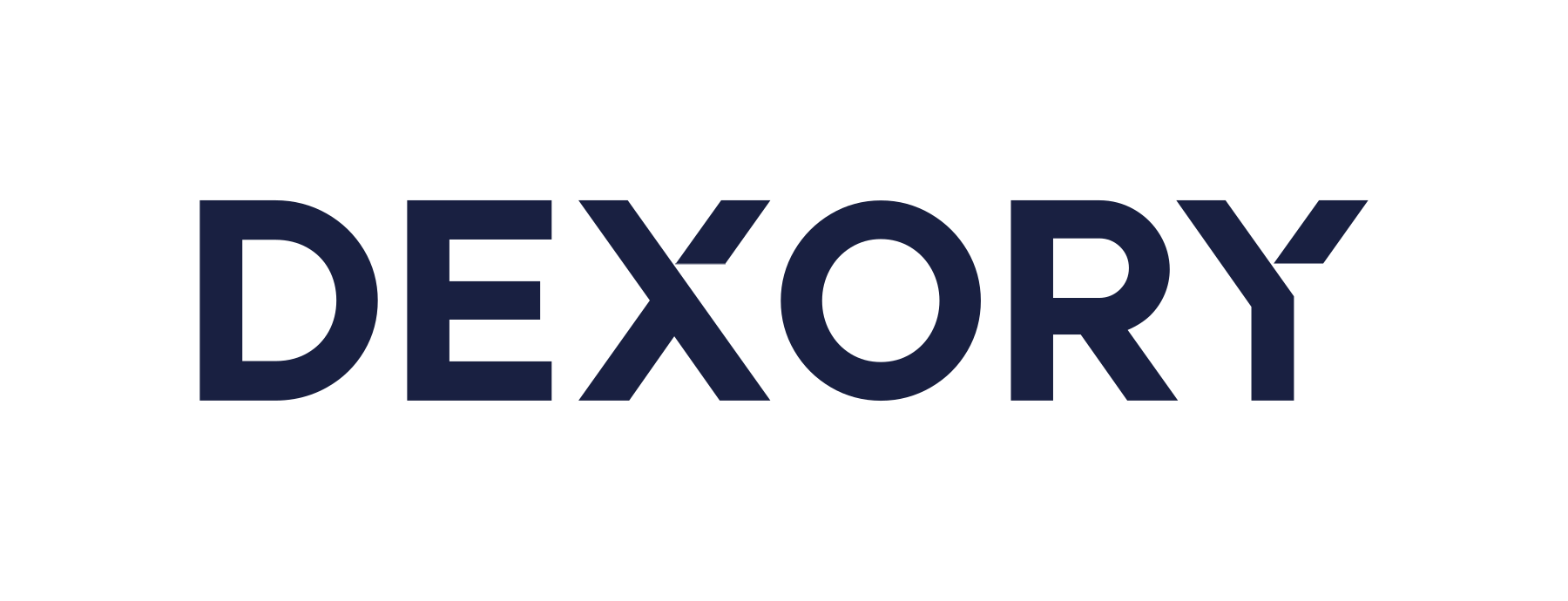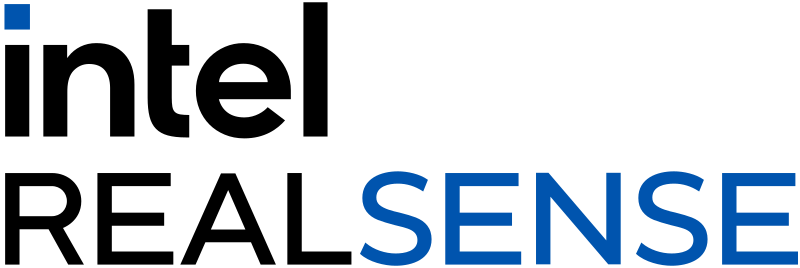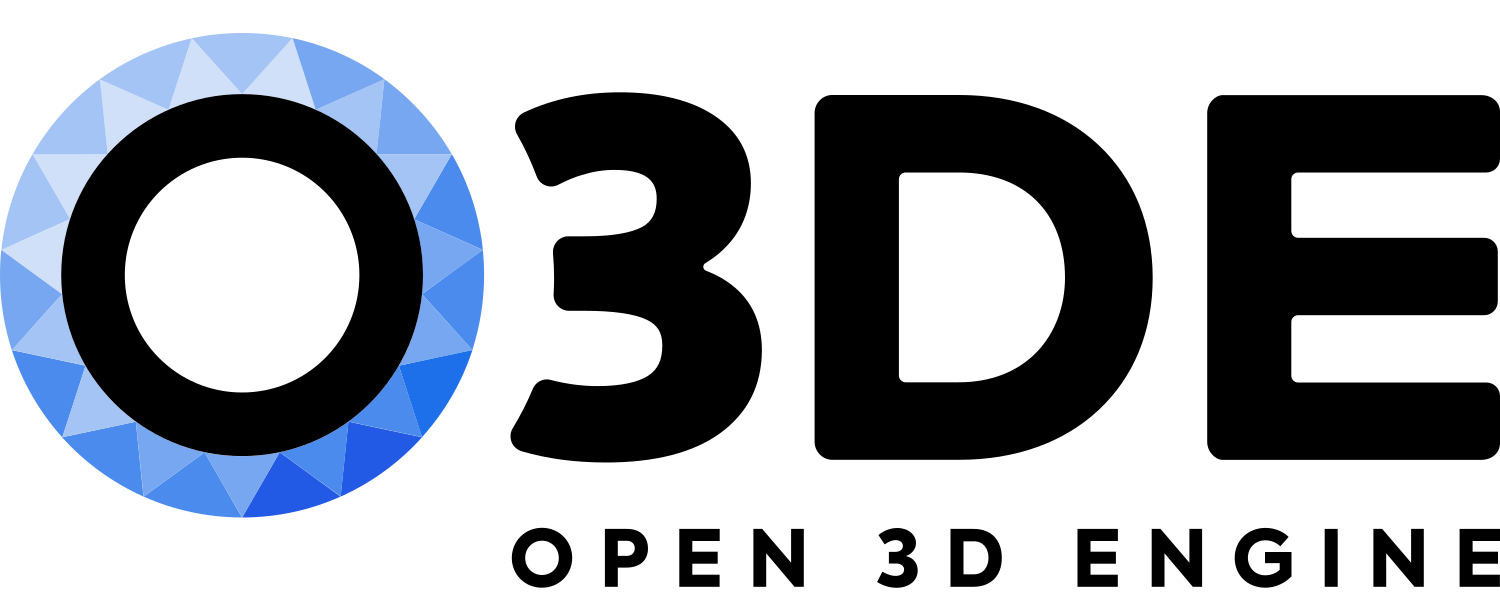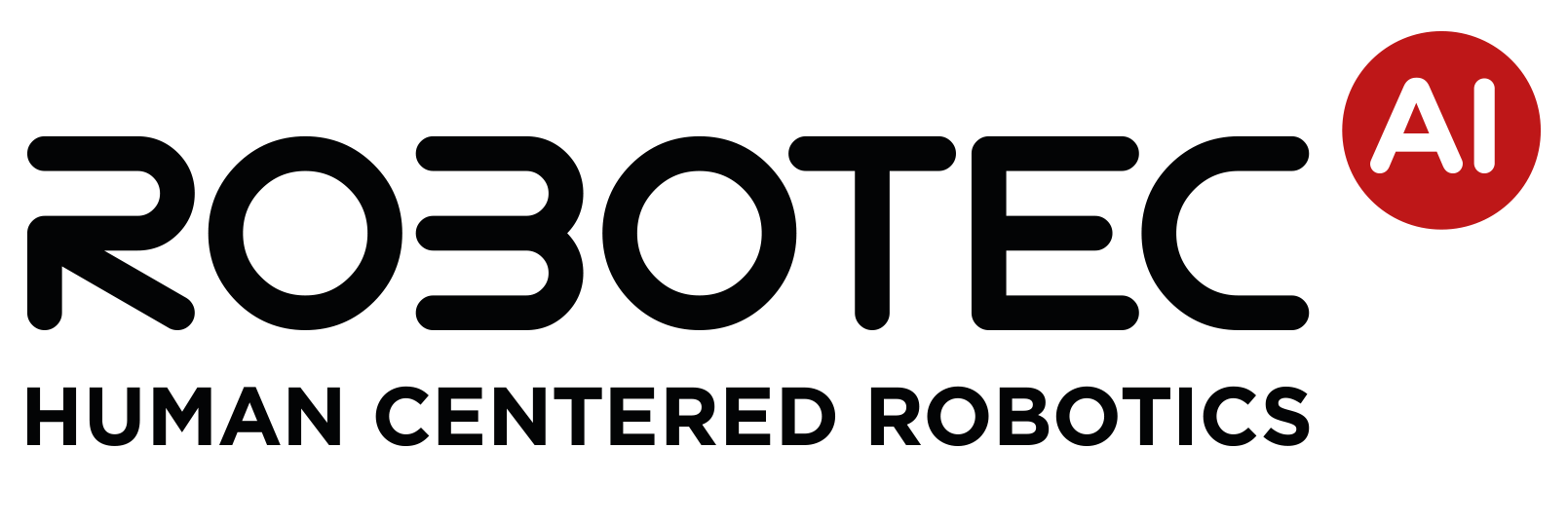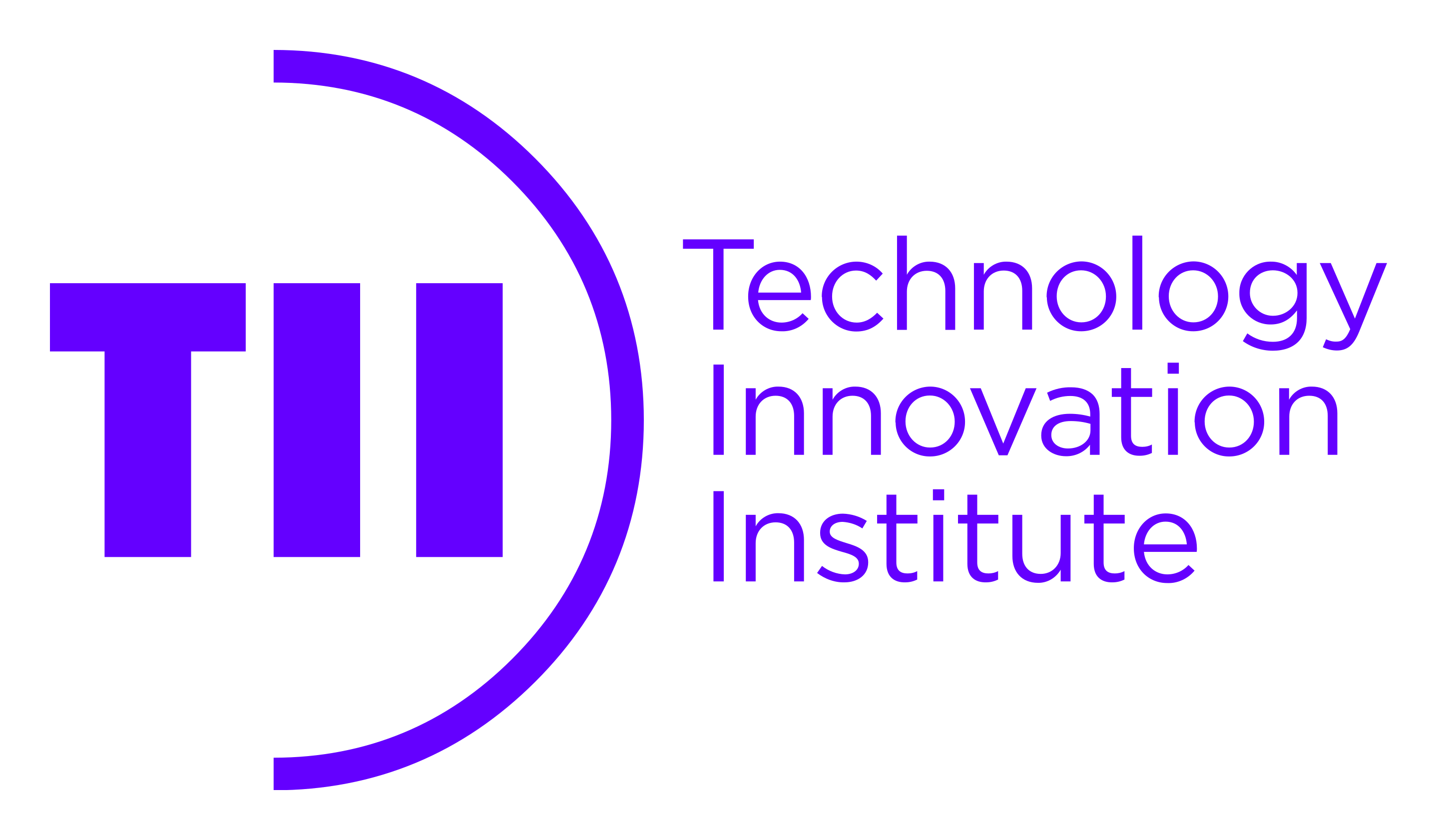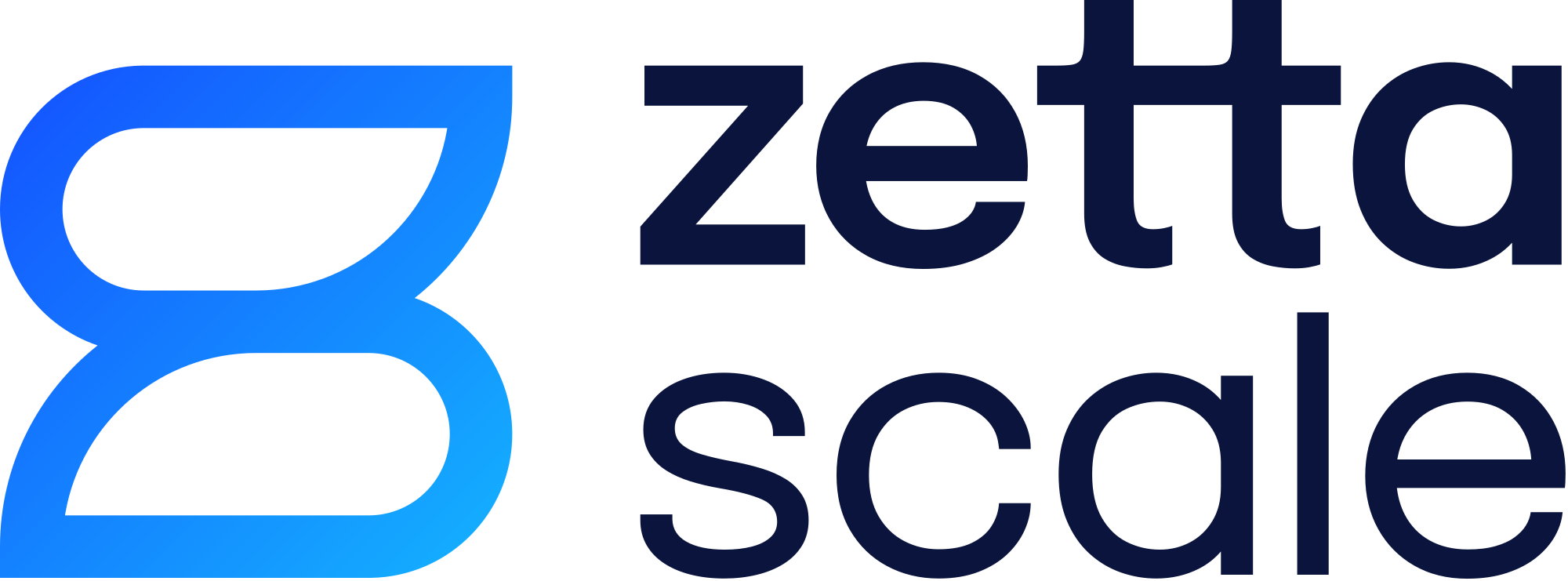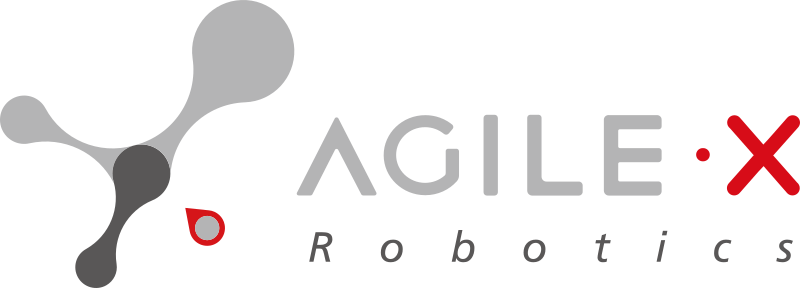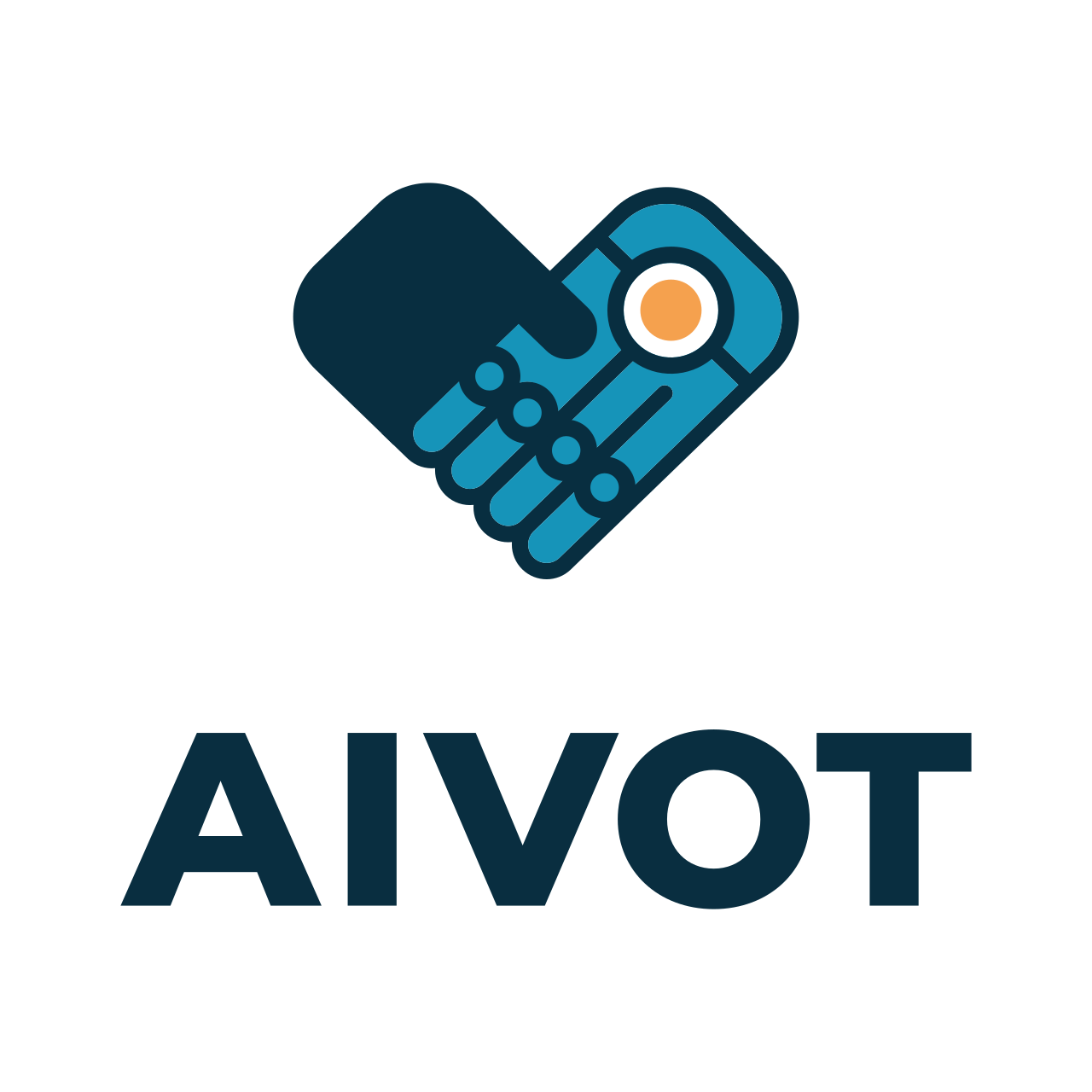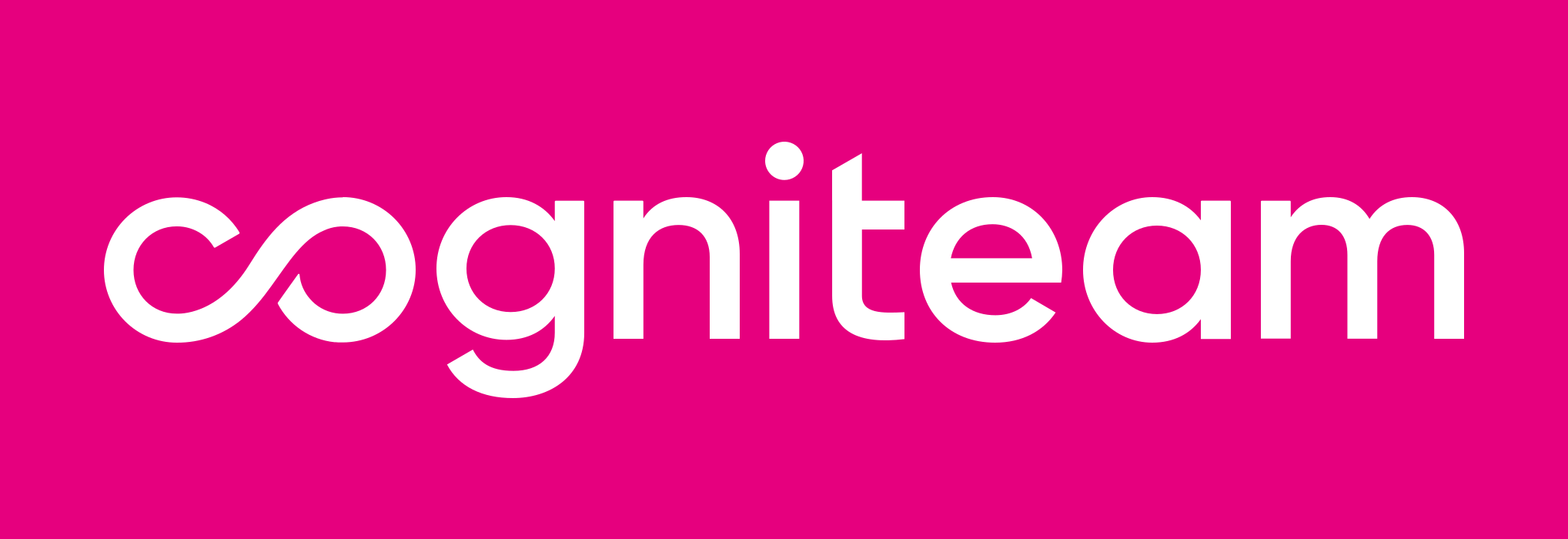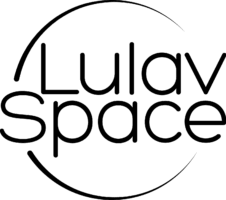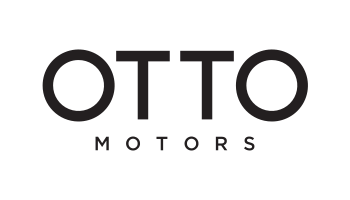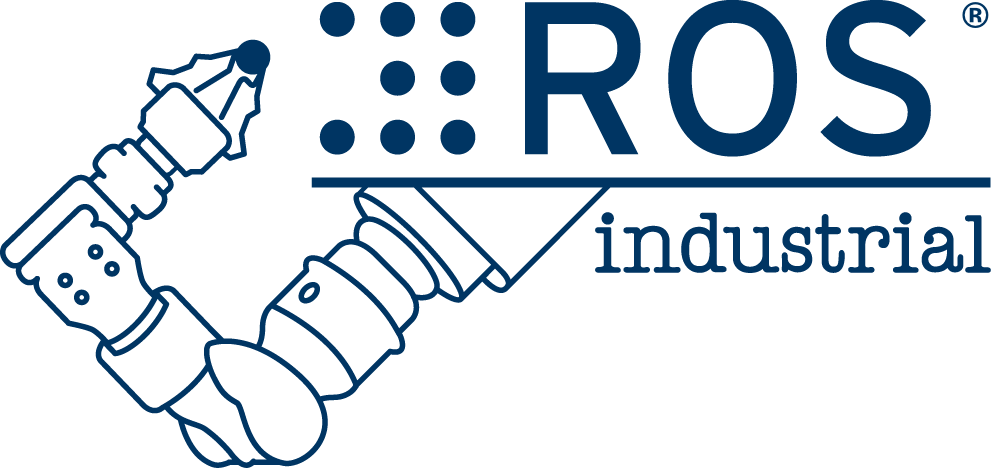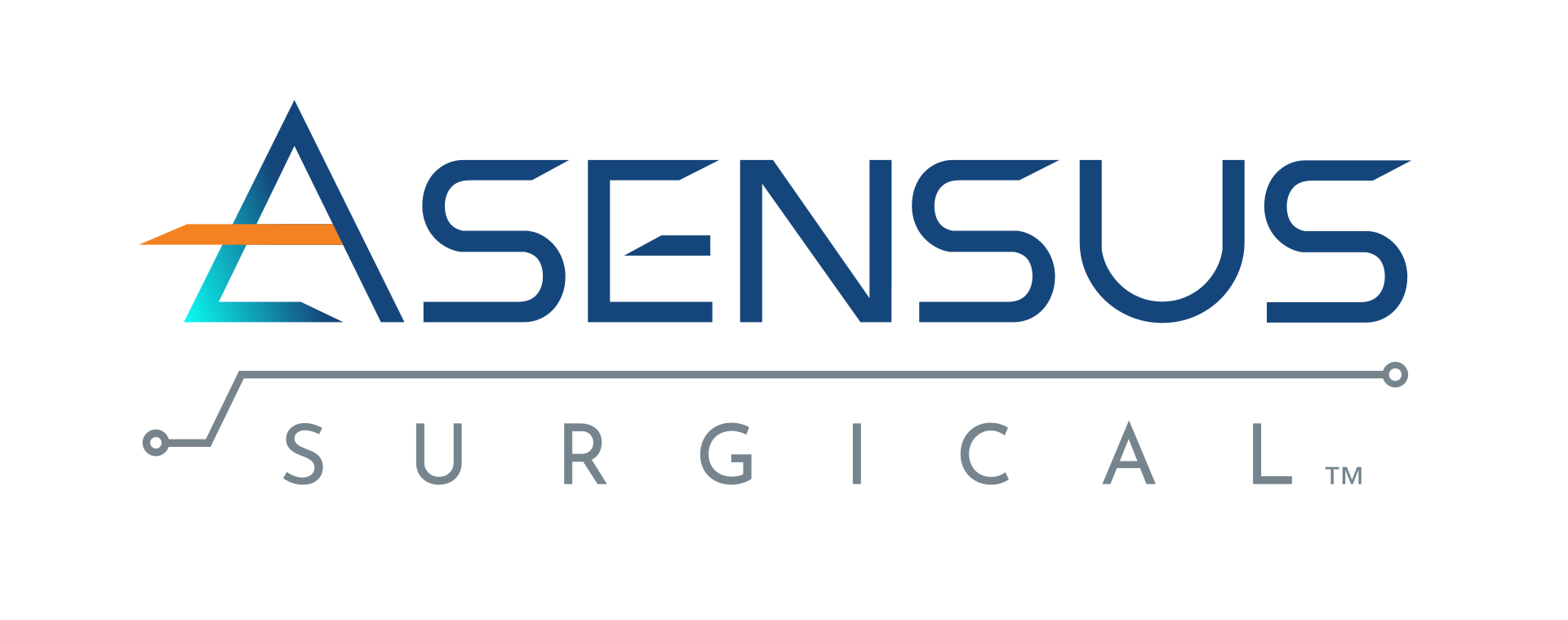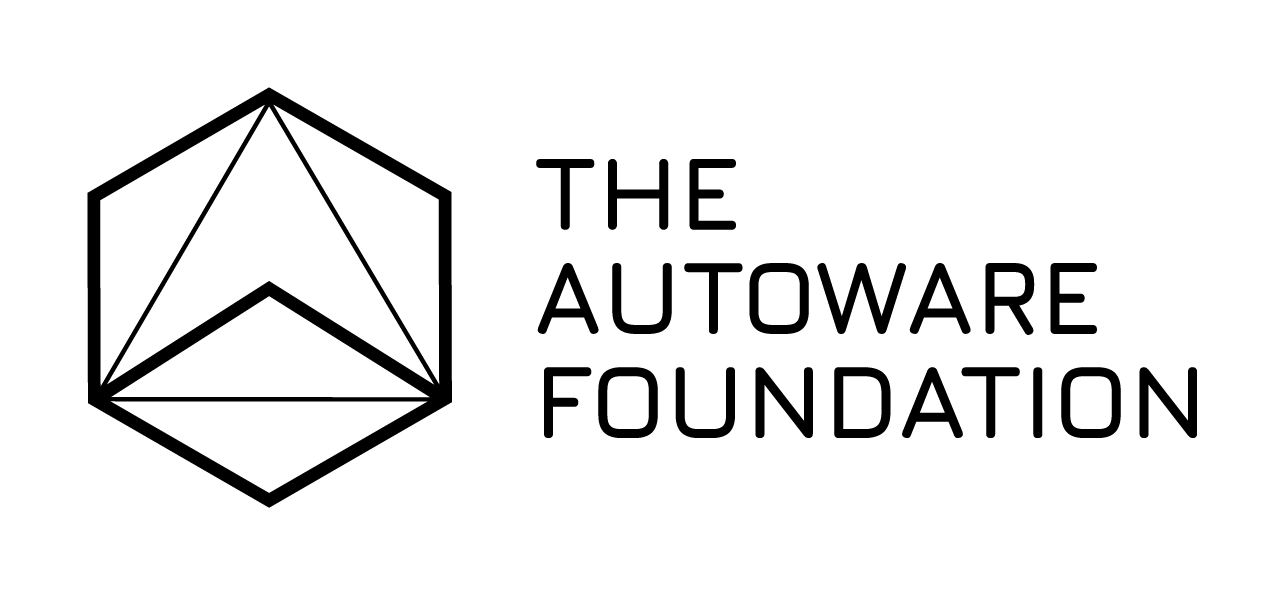Attempting to load ROSCon Archive Listings.
ROSCon 2023 is a wrap!

Thank you to all 700+ of you from 42 countries who attended! We look forward to seeing you in Odense, Denmark in October 21st-23rd, 2024!
ROSCon 2023
New Orleans, Louisiana
October 18th - 20th, 2023
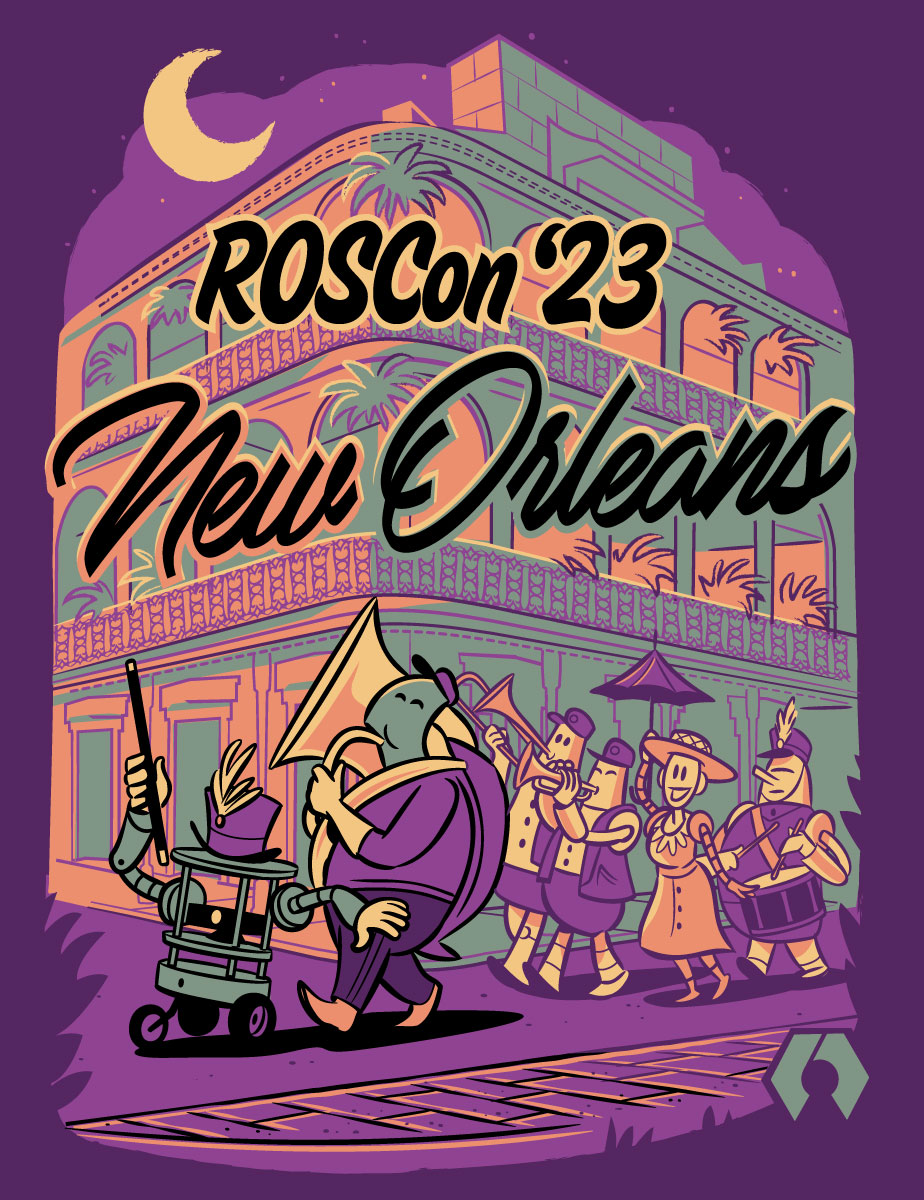
ROSCon 2023 will be held at the The New Orleans Hyatt Regency on October 18th through the 20th, 2023. ROSCon 2023 is a chance for ROS developers of all levels, beginner to expert, to spend an extraordinary two days learning from and networking with the ROS community. Get tips and tricks from experts and meet and share ideas with fellow developers.
ROSCon is a developers conference, in the model of PyCon and BoostCon. Following the success of our past events, this year’s ROSCon will be our twelveth ROSCon and held in New Orleans, Louisiana, USA. Similar to previous years, the two-day program will comprise of technical talks and tutorials that will introduce you to new tools and libraries, as well as teach you more about the ones you already know. The bulk of the program will be 10-30 minute presentations (some may be longer or shorter) along with panel discussions, lightning talks, demonstrations, and workshops.
We aim for ROSCon to represent the entire ROS community, which is global and diverse. Whoever you are, whatever you do, and wherever you do it, if you’re interested in ROS, then we want you to join us at ROSCon. We encourage women, members of minority groups, and members of other under-represented groups to attend ROSCon. We expect all attendees to follow our code of conduct.
If you have questions, concerns, or ideas for ROSCon 2023, please contact the executive committee
We also welcome suggestions for what else we can do to encourage more participation. Contact us if you have ideas that you’d like to share.
Dates
ROSCon 2023 Key Dates
Call for Proposals circulated
April 7th, 2023
Workshop submission deadline
May 7th, 2023
Diversity Scholarship application deadline
June 11th, 2023
Proposal submission deadline
July 9th, 2023
Proposal acceptance notification
August 17th, 2023
Early registration deadline
September 3rd, 2023
Late registration starts
October 1st, 2023
Sponsors
Sponsor ROSCon 2023!
We are now accepting sponsorships for ROSCon 2023! Full details regarding our 2023 sponsorship benefits are listed in our sponsorship prospectus. We recommend that you claim your spot as soon as possible, booth space and sponsorship add-ons for ROSCon are limited. New for 2023 we’ve added a “Startup Alley” sponsorship level for emerging companies in the ROS community. Please see our sponsorship prospectus for full details.
Whether you’re ready to commit to a specific level or have a question or special request regarding the sponsorship program, please contact the ROSCon executive committee (roscon-2023-ec@openrobotics.org).
New for 2023, we’re happy to offer a new “Startup Alley” sponsorship level. This sponsorship level is intended for emerging companies in the ROS ecosystem, and gives them a place to meet with the ROS community first hand. This reduced cost shared booth space is available for new companies less than two years old, and under 50 employees. Full details are available in the ROSCon sponsorship prospectus
2023 ROSCon Sponsors
Platinum Sponsors
Gold Sponsors
Silver Sponsors
Bronze Sponsors
Startup Alley Sponsors
attend
Attending ROSCon 2023
ROSCon Registration
Space at ROSCon is limited, and registration is on a first-come, first-serve basis, We recommend you register as soon as possible as ROSCon registration often sells out a few weeks before the event. Workshop seating is limited, and popular workshops fill up quite quickly. Discounted registration fees are available for early registration and students (see the table).
| Ticket Type | Ticket Cost (USD) | Available Dates |
|---|---|---|
| Early Student | $250 | Until September 3rd |
| Early General | $500 | Until September 3rd |
| General Student | $350 | Sept. 3rd - 30th |
| General Adult | $650 | Sept. 3rd - 30th |
| Late Student | $425 | October 1st |
| Late Adult | $750 | October 1st |
| Workshop - Student | $50 + Conference Registration | October 18th (space is limited) |
| Workshop - Adult | $100 + Conference Registration | October 18th (space is limited) |
PX4 Developers Summit
Save $100 When You Attend Both Events!
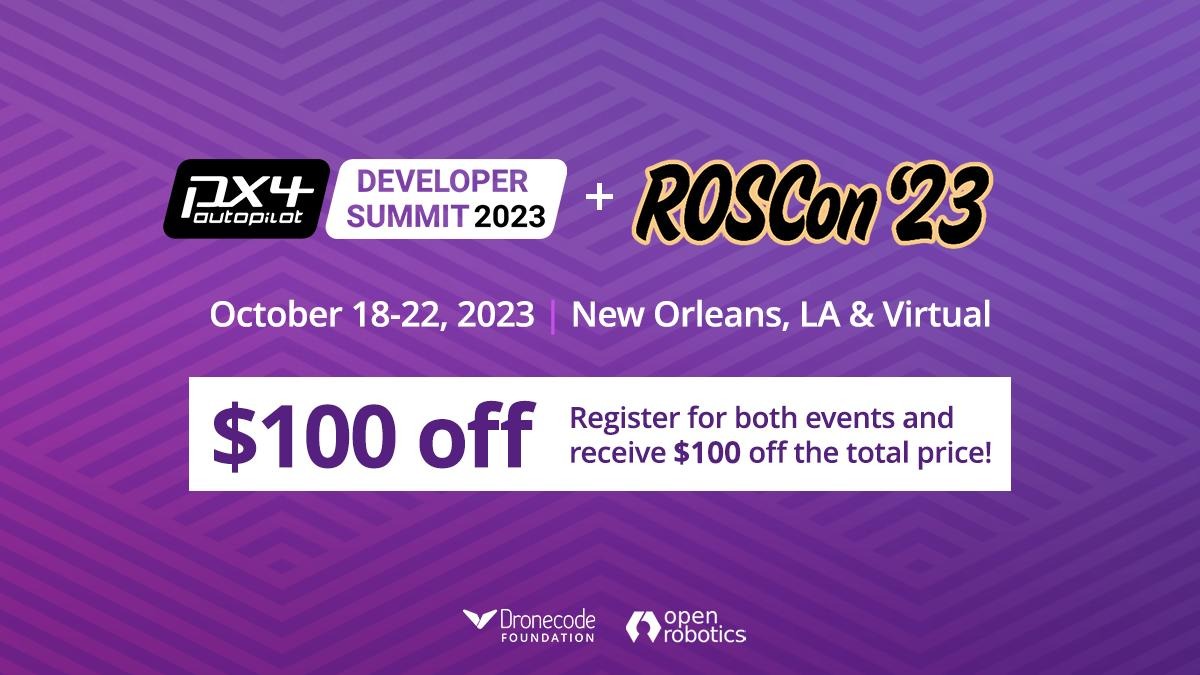
This year ROSCon 2023 and the PX4 Developer’s Summit are being held back-to-back at the Hyatt Regency in New Orleans. ROSCon 2023 will take place October 18 - 20th, and the PX4 Developer’s Summit will take place October 21st - 22nd. We are super excited to bring together the ROS and PX4 communities, and to work with the communities, and to work with the Dronecode Foundation.
The Dronecode Foundation is pleased to offer ROSCon attendees a $100.00 discount to attend the PX4 Developer Summit. In order to qualify for this discount, you must register & attend both events. When you register for either the PX4 Developer Summit or ROSCon 2023, you’ll receive a $100 discount code to use with your registration for the other event! By registering for both events and using the code provided, you are allowing the PX4 event organizers permission to provide the organizers of ROSCon with your contact information for event verification purposes only.
Hotel Information
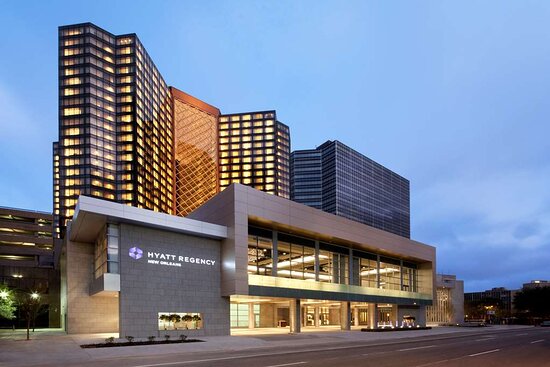
The New Orleans Hyatt Regency is the official event hotel and conference center. We have reserved a block of rooms for ROSCon attendees at a discounted rate. Use the link below to reserve a room in the ROSCon room block. The coference rate for the hotel is $229 per night not including taxes and fees. The last day to reserve a ROSCon hotel at the discounted rate is September 26th, 2023.
Please note that there are only a very limited number of rooms available on Monday, October 16th. If you plan to arrive on Monday, but the date is sold out when you go to book your room, you will need to book elsewhere for that night. There is a full block of rooms available at the Hyatt with our discounted rate beginning on Tuesday.
Event Location
ROSCon 2023 will be held at the the New Orleans Hyatt Regency.. The event address is: 1250 Poydras St, New Orleans, LA 70113-1804. The venue is accessible by public transit, including NORTA street cars and buses.
–Google Maps–Open Street Maps–
Travel to New Orleans
- Air travel to New Orleans is serviced by Louis Armstrong New Orleans International Airport (MSY).
- Train travel to New Orleans is supported by Amtrak’s New Orleans Union Passenger Terminal.
New Orleans Tourism Information
- Wiki Travel Page for New Orleans
- Wiki Voyage Page for New Orleans
- New Orleans Tourism Board
- Atlas Obscura New Orleans
- List of New Orleans Music Venues
- Eater New Orleans (Food Recommendations)
- October 14-23 is New Orleans Black Restaurant Week
- New Orleans Event Calendar
Program
ROSCon Schedule
Workshops - October 18th, 2023
8:00
Real-Time Programming with ROS 2
Shuhao Wu Jan Staschulat 8:00-17:00 Lunch: 12:00-13:00Workshop Website
Real-time programming is an important technique to ensure robotic systems can respond to their environment in a timely and predictable manner to ensure safe operations. Participants will learn about operating systems and real-time concepts as well as best practices for real-time programming using ROS 2 Humble. Furthermore, an experimental real-time-compliant executor is presented. Throughout the day, four hands-on exercises will be prepared with two use-cases: (1) an inverted pendulum demo at 1kHz; and (2) a safety demo at 60Hz real-time. A panel discussion on open technical and organizational challenges for a real-time ROS 2 will be held.
Navigation University
David Lu!! 8:00-17:00Lunch: 12:00-13:00
Workshop Website
How do we make mobile robots go? This education-focused workshop will walk through the process of configuring a robot to navigate its environment, step by step, including: teleoperation, map building, localization costmaps, global planning, local planning, and high level coordination. Each participant will get a unique simulated robot to configure. For every component covered, there will be an introductory presentation covering the key variables and a guide of how to set up a ROS package to enable the robot to navigate successfully.
ROS for Reach Study Analysis
Michael Ripperger 8:00-12:00A reach study analysis is a critical step in the design of a new robotic system, particularly when multiple configuration or robot options are being considered. This workshop will teach you how to deploy the REACH ROS package as a tool for quantitatively evaluating the reachability of a robotic system. You will run reach studies for several example robot system designs, develop plugins for custom behavior, and learn how to analyze the reach study results.
ROS 2 Control on Steroids
Denis Stogl Bence Magyar 13:00-17:00If you already know that the ros2_control framework acts as a Kernel for ROS 2 robotics systems, you are using it but struggling with application complexity, then this workshop is for you. The workshop covers the use of ros2_control in products from various industries and shows solutions for all the little issues when running 24/7. You will get a practical overview of concepts like controller chaining, hardware modularization, multi-robot architectures, parameter injection, and debugging of complex systems. On top of showcasing these functionalities, we expect your involvement in the discussion by bringing your complex application and discussing existing and potentially missing tooling in ros2_control.
17:00
Day One, October 19th, 2023
All times are Central Daylight Time (UTC-5)
9:00 CDT
Opening Remarks
Room: Celestin DE
Geoff Biggs (CTO, Open Robotics)
Brian Gerkey (Director of Software Engineering, Intrinsic)
📹 Watch
9:10 CDT
Building the iRobot® Create® 3 Robot: Challenges and Solutions for ROS 2 Consumer Robotics
Room: Celestin DE
Alberto Soragna (iRobot)
Steven Shamlian (iRobot)
This talk explores the development of the iRobot Create 3 educational robot, focusing on the challenges and solutions when building a consumer robotics product with ROS 2. Discover how to run ROS 2 on resource-constrained hardware, cross-compile and install it on limited flash space, and fine-tune the DDS layer. The presentation includes anonymized user feedback, highlighting areas where users face challenges in ROS 2. Witness the exciting projects built on the Create 3 platform and learn how the community can simplify and improve ROS 2. Join us to uncover the possibilities and impact of ROS 2 in consumer robotics.
🌐 More Info
📹 Watch
🗒️ Slides
9:50 CDT
The State of ROS: From the Iron Age to the Jazzy Age
Room: Celestin DE
Chris Lalancette (Intrinsic)
Yadunund Vijay (Intrinsic)
ROS is a complex project with a lot of moving parts. It is difficult for any one person to understand everything that is going on and where it's all going. In this talk, the ROS project lead and the ROS Boss for Iron Irwini will provide an overview of what new technical features are in Iron Irwini, what is being planned for Jazzy Jalisco, and what long-term goals the project is currently working towards.
🌐 More Info
📹 Watch
🗒️ Slides
10:20 CDT
ROS 2 Types On-the-wire: Type Descriptions and Hashing in Iron and onwards
Room: Celestin DE
Emerson Knapp (Bonsai Robotics)
ROS 2 introduces a common Type Description format and message type that can be communicated on the wire, and a hashing standard for uniquely and compactly representing the exact revision of message types. This feature set is defined in REP-2016, and largely implemented in Iron. This talk will walk through the new core functionality that comes out of the box in Iron -- including discovery-time detection of mismatched types -- how to use the new capabilities in your applications, and a roadmap of future core features that are unlocked by these changes.
🌐 More Info
📹 Watch
🗒️ Slides
10:40 CDT
Morning Coffee Break
Room: Storyville Hall
11:10 CDT
Releasing a new ROS 2 distribution
Room: Celestin DE
Yadu Vijay (Intrinsic)
Chris Lalancette (Intrinsic)
Each year on World Turtle Day (23rd May), a new ROS 2 distribution is released. While development is continuous and community driven, a “Release Team” consisting of OSRF members and led by a “ROSS Boss” is largely responsible for making the distribution available. The goal of this talk is to highlight what goes into a ROS 2 release including name selection, roadmap consensus , distribution branching, CI updates, testing, general availability and maintenance until end of life.
📹 Watch
🗒️ Slides
11:40 CDT
Panel: Getting Involved with ROS as an Organization
Room: Celestin DE
Moderator: Tully Foote (Intrinsic)
Panelists: Alberto Soragna (iRobot), Sabine Hauert (Hauert Lab), Christian Henkel (Bosch), Christine Fraser (Asimovo)
This panel will explore how organizations of all sizes manage their contributions to ROS and Gazebo. We’ll discuss how some businesses have removed the institutional barriers and addressed the intellectual property concerns surrounding contributing to open-source.
📹 Watch
12:10 CDT
13:40 CDT
Licensing of ROS Packages: Changes to package.xml and new tool support
Package / Release / Deploy 13:40 - 14:00 CDT
Christian Henkel (Robert Bosch GmbH)
Ralph Lange (Robert Bosch GmbH)
Any open-source software must have a license. ROS packages declare this license in their package.xml. It is a considerable risk to the usage of ROS in commercial products if this information is insufficient or incorrect. For this reason, the package.xml format (REP-149) has recently been slightly extended and made more precise. We discuss these changes and introduce the ros_licensing_toolkit. It scans the source code of ROS packages and checks if the discovered licenses are declared correctly. Additionally, it supports the generation of copyright files according to the Machine-readable Debian Copyright file standard, which shall be integrated in the Build Farm soon.
🌐 More Info
📹 Watch
🗒️ Slides
A New ROS 2 Driver for FANUC Robots Utilizing Ethernet/IP
Industrial Robotics 13:40 - 13:50 CDTJames Lasso (University of Idaho)
In this talk we describe a novel method for implementing a ROS 2 driver for FANUC industrial robots utilizing the standard protocol Ethernet/IP for sending and receiving ROS 2 commands and data. We will be describing the whole ROS 2 stack from the base Ethernet/IP python drivers to the ROS 2 integration packages as well as describing the FANUC software drivers involved. This ROS 2 driver should work with any FANUC robot using a 30 series controller and has been tested on the CRX10, P50iB. R-2000ic, and the M710. The open source code is available on the attached github URL.
🌐 More Info
📹 Watch
🗒️ Slides
A ROS 2 Package for Online Cobots Impedance Modulation
Industrial Robotics 13:50 - 14:00 CDTLiana Bertoni (Italian Institute of Technology)
Human-robot interaction in realistic environments demands the capability of on-the-fly adapting the robot's behavior. Employing collaborative robots, the interaction and robot motions are further enhanced by exploiting robot impedance. For this purpose, an open-source ROS 2 dedicated package has been developed with the aim of automatically modulating online the robot impedance based on the task to execute which can vary over time. Specifically, the package provides the stiffness and damping parameters required to execute a task and to be directly set in the motors. With this work, we aim to support and facilitate the community in developing human-robot applications.
🌐 More Info
📹 Watch
🗒️ Slides
14:00 CDT
SDFormat: A robot description format in constant evolution
Package / Release / Deploy 14:00 - 14:20 CDT
Alejandro Hernández Cordero (OSRF)
Addisu Taddese (Intrinsic)
SDFormat is a widely used file format for describing robot simulation environments. It allows us to describe all aspects of robots: static and dynamic objects, lighting, physics, terrains and environments. This talk will introduce some of the recent additions to the libsdformat library including Python bindings and converters for other formats such as USD and MJCF. We will also discuss some of the new improvements to the SDFormat specification such as model composition and the new ways of expressing poses.
🌐 More Info
📹 Watch
🗒️ Slides
Real-Time Motion Control in ROS: Uniting HAL with Tormach's ZA6 Robot
Industrial Robotics 14:00 - 14:20 CDT
John Morris (Tormach)
Brandon Duarte (Tormach)
Tormach’s expertise in CNC motion control has been applied to bridge the gap between ROS and the MachineKit/LinuxCNC Hardware Abstraction Layer (HAL). Leveraging the strengths of these open-source projects, we created a seamless interface that allows for high-performance, real-time motion control within the ROS ecosystem, with control loops of 1kHz up to 3MHz. Join us as we dive into the details of the hal_ros_control package.
🌐 More Info
📹 Watch
🗒️ Slides
14:20 CDT
Repeatable Reproducible Accessible ROS Development via Dev Containers
Package / Release / Deploy 14:20 - 14:40 CDTRuffin White (Ca’ Foscari University)
This talk introduces a template for open-source educational platforms, aiming to teach robotics to young or disadvantaged students and simplify onboarding for ROS projects. The template enables a professional robotics development experience through a Web browser or Progressive Web Apps, utilizing tools like VS Code, Gzweb, Foxglove, and Dev Containers: hosted locally on premise hardware or remotely with cloud-based services like GitHub Codespaces. Challenges and limitations are similarly discussed, including proposed enhancements using emerging standards like QUIC and WebTransport, enabling browser-compatible middlewares with superior Quality of Service capabilities compared to legacy WebSockets over TCP.
🌐 More Info
📹 Watch
🗒️ Slides
A safe and secure ROS 2 multi-domain architecture for AMD embedded heterogeneous platforms
Industrial Robotics 14:20 - 14:40 CDT
Alesandro Biondi (Accelerat SRL)
Tomas Thoresen (AMD)
This talk presents a safe and secure architecture for developing mixed-criticality applications based on ROS 2 for the AMD Ultrascale+ MPSoC platform. The proposed solution allows multiple ROS execution domains, with different safety and security levels, to run together upon the same chip, leveraging software- and hardware-based strong isolation. Multiple ROS 2 and micro-ROS instances, respectively powered by Linux and FreeRTOS Operating Systems, can concurrently run in isolation while safely and securely communicate in a transparent way through a multi-domain DDS abstraction. The architecture is powered by the CLARE Software Stack by Accelerat and will be demonstrated with an autonomous drone application.
🌐 More Info
📹 Watch
🗒️ Slides
14:40 CDT
Colcon-in-container: say bye to the "it builds on my machine" syndrome
Package / Release / Deploy 14:40 - 14:50 CDTGuillaume Beuzeboc (Canonical)
colcon-in-container is a new colcon extension to run colcon commands inside a fresh and isolated ROS 2 environment. With this extension, developers can build ROS packages for any ROS 2 distributions directly from colcon independently of the host. With it, one can validate builds and tests making sure all the dependencies are properly listed in their package.xml on any ROS 2 distribution. Validating packages and workspaces in an isolated and ephemeral environment is key for distributing and packaging software.
🌐 More Info
📹 Watch
🗒️ Slides
Optimizing MoveIt - Costs, Constraints and Betterments
Industrial Robotics 14:40 - 15:10 CDTHenning Kayser (PickNik Robotics)
MoveIt has received plenty of new features and improvements over the past year that make it a much more versatile and better performing framework. Many of these features are not commonly known, much less what they offer if combined with each other. This talk tells the story of the most important improvements, ranging from optimization-based Inverse Kinematics and Motion Planning with cost functions and constraints, up to other features like the newly added Python Bindings.
🌐 More Info
📹 Watch
🗒️ Slides
14:50 CDT
ROS with Kubernetes/KubeEdge
Package / Release / Deploy 14:50 - 15:10 CDTTomoya Fujita (Sony Corporation of America)
Robot and robotics applications can be complicated and distributed in an edge IoT environment, and the number of devices significantly increases. As ROS matures, we have another question which is "How can we manage multiple and distributed thousands of robots?". This presentation outlines the solution against those situations by Kubernetes and KubeEdge, and introduces concrete examples for ROS 1 and ROS 2 application fleet management. This talk also includes hardware capability control and ROS 2 security enclaves to manage in examples to provide a good understanding to the ROS community.
🌐 More Info
📹 Watch
🗒️ Slides
15:10 CDT
Afternoon Coffee Break
Room: Storyville Hall
15:40 CDT
Leveraging a functional approach for more testable and maintainable ROS code
Quality & Testing 15:40 - 16:00 CDTBilal Gill (PickNik Robotics)
Since most code examples in ROS utilize an object-oriented approach, challenges can arise when writing tests for production code due to the boilerplate code ROS introduces, often leading to unexpected bugs or flaky tests. This talk explores ways to mitigate those issues by using a functional approach. By adopting this approach, we can minimize the impact that ROS has on your code, preventing it from becoming tightly coupled and brittle. Attendees can expect an overview of ROS 2 and the conventional programming approach typically associated with it. We'll delve into how tests are usually constructed and pinpoint potential sources of bugs and flakiness. We will end by introducing a functional approach to writing test code.
🌐 More Info
📹 Watch
🗒️ Slides
On Use of Nav2 MPPI Controller
Mobile Robotics 15:40 - 16:00 CDTSteve Macenski (Open Navigation LLC)
We introduce the Nav2 project's MPPI Local Trajectory Planner. It is the functional successor of the TEB and DWB controllers, providing predictive time-varying trajectories reminiscent of TEB while providing tunable critic functions similar to DWB. This package fills a broad need in the community for improved behavior for trajectory planning which is long been a weak spot in ROS Navigation. It can handle circular and arbitrarily-shaped Differential, Omnidirectional, Ackermann, and Legged robots. This trajectory planner can operate on reasonably low-power systems at 30 - 50 Hz to be drop-in replacable and has been carefully tuned to provide stellar out-of-the-box default behavior. This talk will go over key points of the package, demonstrations, and how to enable it in an application.
🌐 More Info
📹 Watch
🗒️ Slides
16:00 CDT
Real-time Data-flow extension for ROS 2
Quality & Testing 16:00 - 16:20 CDTChristopher Helpa (TTTech Auto)
Many real-time applications have strict end-to-end latency requirements from sensor inputs reception to actuator control which includes a complex graph of inter-dependent nodes. ROS 2's current data-driven approach and reliance on the OS scheduler can lead to indeterministic behavior which causes issues for verification of system correctness. Another critical aspect is ensuring system liveness even when some faulty nodes execute longer than expected. We introduce a data-flow programming and scheduling-inspired ROS 2 extension where dispatching decisions are dynamically taken based on the system's data flow and timing requirements, and state of execution. By doing so we achive a system-wide data-flow deterministic execution.
🌐 More Info
📹 Watch
🗒️ Slides
Bidirectional navigation with Nav2
Mobile Robotics 16:00 - 16:20 CDTGuillaume Doisy (Dexory)
Many robots possess a non-circular footprint which is often symmetrical (a rectangular footprint for instance). This theoretically allows these robots to move without a preferred direction of motion. However the software controlling these symmetrical robots should support such bidirectionality. Recent updates in Nav2 allows it through all levels of the stack.
🌐 More Info
📹 Watch
🗒️ Slides
16:20 CDT
An Integrated Modelling and Testing Architecture for ROS Nodes
Quality & Testing 16:20 - 16:40 CDTJacob Hartzer (Texas A&M University)
Often in robotics research, software is co-developed in multiple programming languages: a scripted language like Matlab for algorithm development, and a compiled language like C++ for deployed code. While scripted languages can initially improve development speed, the need to transfer to a compiled language for performance reasons can lead to costly debugging which increases with system complexity over time. In a new project, EKF-CAL, ROS node code is integrated with a multi-fidelity simulation framework. This framework is presented alongside techniques used to improve the long-term quality of deployed ROS code using unit and Monte Carlo testin
🌐 More Info
📹 Watch
🗒️ Slides
Autonomous Robot Navigation and Localization on 3D Mesh Surfaces in ROS
Mobile Robotics 16:20 - 16:40 CDT
Sebastian Pütz (Nature Robots, DFKI)
Alexander Mock (Osnabrück University)
We present two open-source ROS software stacks that in combination enable a very powerful real-time localization and navigation on an arbitrary 3D surface. Using ray tracing, the robot is localized in real-time on the 3D mesh in 6DoF. Additionally, the Mesh Navigation Stack and Continuous Vector Field Planner (CVP) can be used to compute a shortest path across the surface. CVP is similar to Dijkstra and has the same runtime, but plans over the surface rather than along edges! It calculates a consistent vector field, which is a great advantage for executing the path.
🌐 More Info
📹 Watch
🗒️ Slides
16:40 CDT
Breaking Bots: Robustness Testing for ROS
Quality & Testing 16:40 - 17:00 CDTChris Timperley (Carnegie Mellon University)
How do you test that your robot continues to behave safely under rare and adverse operating conditions? Such events are difficult to controllably test in the field and difficult or impossible to reproduce in simulation. In this talk, we present MOBSTA (Mutation- and Oracle-Based Safety Testing for Autonomy), an open source tool for ROS that takes recorded bag data, collected under normal conditions in the field, automatically perturbs that data on the fly to replicate the effects of real-life failures, and observes your robot for safety violations.
🌐 More Info
📹 Watch
🗒️ Slides
ROS 2 powered Android VHAL.
Mobile Robotics 16:40 - 16:50 CDTSlawomir Cielepak (Spyrosoft Synergy)
This article presents a project exploring the integration of the Android Vehicle Hardware Abstraction Layer (VHAL) with Micro-ROS, aiming to deliver vehicular data to Android applications via the DDS protocol. The primary objective of this integration is to demonstrate the potential for interfacing the ROS framework with Android applications, eliminating the need for manual ROS layer integration within the applications' codebase. The successful realization of this project introduces a novel communication method with ROS-based vehicle systems, potentially transforming the way we interact with such systems in the future.
📹 Watch
🗒️ Slides
From Lunar Crash to CITROS: Navigating the Path to Robotic Software Validation
Mobile Robotics 16:50 - 17:10 CDTNoam Leiter (Lulav Space Ltd.)
Inspired by the Beresheet lunar mission, Lulav Space, an Israeli startup specializing in space applications, has developed CITROS, a cloud-based robotic software validation platform. Built on ROS 2, CITROS allows easy integration of various robotic systems, provides parallel simulation on the cloud and powerful data analysis and reporting capabilities with an intuitive Python-based API. In this talk, we will present CITROS to the ROS community, highlighting its benefits, CI/CD capabilities, and open source contributions. The talk targets individuals interested in ROS, cloud computing, DevOps, and simulation.
17:00 CDT
Rclex on Nerves: a bare minimum runtime platform for ROS 2 nodes in Elixir
Quality & Testing 17:00 - 17:10 CDTHideki Takase (The University of Tokyo)
Do you know the magic of Elixir programming language, and how easily this can be installed into robot systems? One of the solutions is "Rclex," which is a client library for ROS 2 platform. Furthermore, Nerves provides a powerful platform specifically tailored for Elixir on IoT systems. This talk introduces "Rclex on Nerves," a minimal runtime platform for operating ROS 2 nodes using the Elixir. In this presentation, we will delve into the features, advantages, and role of Rclex on Nerves within the ROS 2 ecosystem.
🌐 More Info
📹 Watch
🗒️ Slides
17:10 CDT
Transition Time
17:20 CDT
⚡Lightning Talks⚡
Room: Celestin DE
Lightning talks are an annual ROSCon tradition! Members of the ROS community will present their latest work using rapid-fire short talks. Want to give a lightning talk? Lightning talk details can be found here
📹 Watch
18:10 CDT
Group Photo
Room: Celestin DE
18:20 CDT
Reception
Room: Storyville Hall
Day Two, October 20th, 2023
All times are Central Daylight Time (UTC-5)
9:00 CDT
Up, Up, and Away: Adventures in Aerial Robotics
Room: Celestin DE
Ramon Roche (Dronecode Foundation)
Kimberly McGuire (Bitcraze AB)
Aerial robotics presents unique challenges that distinguish it from ground robots, resulting in numerous projects and stack developments solely dedicated to aerial vehicles in ROS. The field is currently witnessing a surge in UAV-specific control and navigation projects, alongside the development of flight simulators. Moreover, critical factors such as UAV-based control, diverse vehicle types (quadcopters, flapping wings, fixed-wing/VTOL), safety considerations, and regulatory aspects come into play. These factors merely scratch the surface of the vast realm of aerial robotics. In this talk, our aim is to deliver a comprehensive overview, delving into the fundamental aspects that not only drive these systems but also enable them to take flight.
🌐 More Info
📹 Watch
🗒️ Slides
9:40 CDT
NEXUS: A ROS 2 framework for orchestrating industrial robotic lines and cells
Room: Celestin DE
Dejanira Araiza Illan (Johnson & Johnson, Singapore)
We present NEXUS, a ROS 2 framework developed by Johnson & Johnson and partners, which enables configuration and orchestration of process workflows for both individual robotic cells and sets of cells (line). NEXUS facilitates the integration of hardware agnostic industrial robotics and traditional automation components, specifying each cell or line processes through re-configurable behaviour trees. Cells in a line, or hardware components in a cell, can be triggered concurrently or sequentially according to recipes, managed through the orchestrator, departing from traditional Programmable Logic Controllers. NEXUS will be released open-source and builds upon existing frameworks such as moveit2, ROS 2_controls, and Open-RMF.
🌐 More Info
📹 Watch
🗒️ Slides
10:00 CDT
Aerostack2: A framework for developing Multi-Robot Aerial Systems
Room: Celestin DE
Miguel Fernandez-Cortizas (Universidad Politécnica de Madrid)
This talk introduces Aerostack2, a framework designed to address the lack of collaboration and standardization in the field of aerial robotics. Built on ROS 2, offers a versatile and platform-independent environment for the development of autonomous aerial robotics systems. Its modular software architecture and multi-robot orientation enable the integration of diverse capabilities for autonomous operation. Key contributions include a logical mission specification level, component and sub-system reuse, and the development of complete control architectures. Aerostack2 has been extensively tested in simulation and real flights with heterogeneous swarms, and it is open source and community-oriented, fostering accessibility for autonomous drone developers.
🌐 More Info
📹 Watch
🗒️ Slides
10:20 CDT
Creating scalable customized robotic platforms
Room: Celestin DE
Luis Camero (Clearpath Robotics)
Tony Baltovski (Clearpath Robotics)
Clearpath Robotics produces hundreds of robots every year, with custom configurations of sensors and attachments. It has been difficult to scale the software, to build these custom robots. Clearpath had a solution for ROS 1 that worked, but could not scale to different platforms, and was difficult to maintain. Using the learnings from the shortcomings of the approach used for ROS 1, a new solution was developed for ROS 2 Humble to reduce payload integration by 83%.
🌐 More Info
📹 Watch
🗒️ Slides
10:30 CDT
Morning Coffee Break
Room: Storyville Hall
11:00 CDT
Create® 3 Robot in the Classroom: Teaching ROS 2 to Undergraduates
Room: Celestin ABC
Briana Bouchard (Tufts University)
Kathryn Wujciak (Tufts University)
Teaching ROS 2 to students is not common in undergraduate curriculum. To lower the barrier of entry, we provide strategies for effective ROS 2 instruction, while also noting the significance of hands-on projects using the Create® 3 robot. We focus on making ROS 2 accessible through classroom-friendly configurations such as the Raspberry Pi and Jupyter Notebook. This not only enhances learning, but also prepares students for a career in robotics. We share the significance of collaboration, practicality of projects, and a potential curriculum for educators. The talk aims to empower educators and encourage innovative teaching methods within the ROS community.
🌐 More Info
📹 Watch
🗒️ Slides
11:20 CDT
ROS 2 On the Browser with WebAssembly for Teaching Robotics
Room: Celestin ABC
Isabel Paredes (QuantStack)
This talk outlines a quick and effective method to access ROS 2 without any setup by cross-compiling ROS 2 packages to WebAssembly and running them on a webpage. The process involves using a custom middleware, emscripten (a compiler toolchain), and web workers. By leveraging this approach, roboticists can access ROS functionality directly from a web browser without the need for complex setup and configuration. This presentation provides an overview of the key steps involved in cross-compiling ROS 2 packages utilizing web technologies, and highlights the benefits of this approach for a seamless ROS integration in web-based teaching applications.
🌐 More Info
📹 Watch
🗒️ Slides
11:30 CDT
⚡Lightning Talks⚡
Room: Celestin ABC
Lightning talks are an annual ROSCon tradition! Members of the ROS community will present their latest work using rapid-fire short talks. Want to give a lightning talk? Lightning talk details can be found here
📹 Watch
12:20 CDT
13:50 CDT
Octomap is dead: long life Bonxai
ROS Development 13:50 - 14:10 CDTDavide Faconti (Picknik Robotics)
Octomap is a library used in many applications, such as: navigation (wheeled robots), obstacle avoidance (drones), path planning (robotic arms). It served the community well for over a decade, but it is also known to be considerably slow. Bonxai is a drop-in replacement that is almost 1 order of magnitude faster. it can be used in the context of ROS/ROS 2 or as a standalone C++ library with no dependencies.
🌐 More Info
📹 Watch
🗒️ Slides
Simulate your World: A deeper look at extending Gazebo
Simulation 13:50 - 14:10 CDT
Michael Carroll (Intrinsic)
Arjo Chakravarty (Intrinsic)
In this talk, we will take a walk through some inner workings of the Gazebo simulator, a powerful open-source simulation engine used by robotics researchers and developers around the world. We want to specifically highlight the mechanisms that are of interest to people looking to develop their own plugins to customize the behavior of their simulated environment. This covers the architecture of Gazebo, how system plugins are located, loaded and executed, and how server plugins interact with the GUI. We will also demonstrate a new set of simple simulation APIs focused on making Gazebo easier to customize than ever before.
🌐 More Info
📹 Watch
🗒️ Slides
14:10 CDT
Parameters Should be Boring
ROS Development 14:10 - 14:30 CDTTyler Weaver (Picknik Robotics)
generate_parameter_library improves the experience of both users and developers of ROS 2 packages by handling the fiddly details of parameters in a boring but correct way. Since releasing it open-source in the summer of 2022, ROS 2_control, PickNik, and many others in the ROS community have adopted my parameter library. Learn about how ROS 2 parameters work, how you can use them through generate_parameter_library, and guidelines for parameter design towards building nice abstractions.
🌐 More Info
📹 Watch
🗒️ Slides
Simulate robots like never before with Open 3D Engine
Simulation 14:10 - 14:30 CDTAdam Dabrowski (Robotec.ai)
Open 3D Engine (O3DE) is unlike any other simulator. The robotic simulation in O3DE was designed specifically for ROS 2 in terms of its concepts, developer’s experience, and direct integration with the ecosystem. O3DE is open-source and runs large-scale, multi-robot simulations that look great. This talk will present its unique strengths to the audience and discuss use cases for which O3DE is the best fit among all simulators, providing evidence and user stories to justify the claim.
🌐 More Info
📹 Watch
🗒️ Slides
14:30 CDT
Using Reference System to evaluate features and performance in a standardized and repeatable way
ROS Development 14:30 - 14:50 CDTLyle Johnson (Apex.AI)
The reference_system provides an open-sourced, standardized and repeatable way of measuring key performance indicators (KPIs) of various ROS 2 executors available today. Apex.AI continues to maintain and use this tool to benchmark and measure performance of available executors across multiple ROS 2 distributions. The reference_system can be used by the greater ROS 2 community to make better decisions on which executor might be best for specific applications.
📹 Watch
🗒️ Slides
Simulation of Highly Dynamic Omnidirectional Robots in Isaac Sim
Simulation 14:30 - 14:50 CDTMarvin Wiedemann (Fraunhofer Institute)
Simulation can speed up the development of robots, and NVIDIA Isaac Sim promises to deliver advanced physics and sensor simulation. However, developing sophisticated models is a challenging task, especially for omnidirectional high-dynamic mobile robots. This talk demonstrates how to model complex mobile robots, such as the next-generation logistics robot O³dyn and outlines how the ROS ecosystem supports the development from modelling the robot’s dynamic to Sim2Real measurements using a motion capture system. Moreover, the talk explores how to create a digital twin in the ROS ecosystem, with simulated sensors and interfaces that are similar in both simulation and reality.
🌐 More Info
📹 Watch
🗒️ Slides
14:50 CDT
RosLibRust: Why we built it, why you might want to use it...
ROS Development 14:50 - 15:10 CDTCarter Schultz (AMP Robotics)
AMP Robotics now has more than 300+ systems deployed around the world. Talking to these system from the cloud can be very challenging, especially when these system aren't all running the same version of software or even the same version of ROS.To make this easier we built roslibrust. Modeled on roslibpy and roslibjs, roslibrust leverages rosbridge_server for its communication backend, but unlocks speed and capabilities of the Rust programming language. A standalone library that doesn't require a ROS environment installed it is an idea tool for building cloud utilities and bridging multiple ROS systems together.
🌐 More Info
📹 Watch
🗒️ Slides
An Integrated Distributed Simulation Environment weaving by Hakoniwa and mROS 2
Simulation 14:50 - 15:10 CDTHideki Takase (The University of Tokyo)
In the era of IoT/Cloud Robotics, the need for collaborative development among engineers from various specialized fields, such as embedded systems, control, and AI, has become increasingly crucial. However, it is not easy to integrate each engineer's diverse technical fields, development languages, and environments. In this talk, we show a successful implementation of an integrated distributed simulation environment using "Hakoniwa" and "mROS 2". This environment allows engineers to leverage their familiar development setups while working together, enabling seamless collaboration in robotics development.
🌐 More Info
📹 Watch
🗒️ Slides
15:10 CDT
Leveraging Secure Discovery Server in ROS 2
ROS Development 15:10 - 15:20 CDTEduardo Ponz Segrelles (eProsima)
Join the talk and discover the newly acquired (ROS 2 Iron) capability of levering SROS 2 while benefiting from the Discovery Server advantages, and learn how to configure it. Discovery Server is a Fast DDS powered alternative discovery mechanism for ROS 2, it drastically reduces ROS 2 discovery related network traffic, while at the same time enabling reliable ROS 2 discovery in deployments where multicast is either not reliable or not present all together (such as WiFi or IT managed networks).
🌐 More Info
📹 Watch
🗒️ Slides
Multi-drone simulation with deep q-learning
Simulation 15:10 - 15:20 CDTVeronika Bojtár (Asimovo)
Drones are becoming an increasingly important part of our lives. However, the current regulations and safety solutions need improvement to allow the use of their full capabilities in our everydays. Could we get 100 drones, with different missions, to fly over a busy public area safely? This talk covers how far we got with training drones in simulation to learn how to avoid collisions in busy drone airspace, the challenges along the way, and how we now plan to get to over 100 drones.
🌐 More Info
📹 Watch
🗒️ Slides
15:20 CDT
Afternoon Coffee Break
15:50 CDT
Supporting Robotic Deliberation: The Deliberation Working Group and Tools for Behavior Trees
Planning 15:50 - 16:10 CDTChristian Henkel (Robert Bosch GmbH)
Robotic deliberation is the software layer that defines a system’s behavior on the highest level. It must enable the robotic system to act robustly and autonomously towards achieving its goal or desired behavior. Technologies commonly used in this layer include behavior trees, finite state machine and first-order-logic planning. The community has proven that ROS (Robot Operating System) offers great building blocks to support this deliberation layer. We would like to present two further steps in this direction: The deliberation working group and bt_tools. With the working groups we aim to give an overview and unify the existing deliberation technologies and to provide a networking opportunity in this area. bt_tools are a set of packages that help the development of behavior trees with their offline analysis, visualization, and online introspection.
🌐 More Info
📹 Watch
🗒️ Slides
What is Robotics Observability? Scaling ROS from Prototype to Production
Data & Logging 15:50 - 16:10 CDTAdrian Macneil (Foxglove)
Observability is about understanding the internal state of a system from data it generates. In the field of robotics, observability is critical for scaling fleets in production - including logging, data ingestion, incident triage & root cause analysis, analytics, and visualization. However, it is made challenging by the nature of distributed robot fleets, multimodal data, and limited-bandwidth environments. In this talk, Adrian will explore observability lessons learned scaling ROS from prototype to production. He will review what observability tools ROS 2 provides out of the box, and design patterns for building a successful observability stack.
📹 Watch
🗒️ Slides
16:10 CDT
FlexBE - The Flexible Behavior Engine: Collaborative Autonomy in ROS 2
Planning 16:10 - 16:30 CDTDavid Conner (Christopher Newport University)
FlexBE, the Flexible Behavior Engine, is a behavior engine that executes hierarchical finite state machines (HFSM) with optional supervised autonomy through an Operator Control Station (OCS). Originally developed in ROS 1 for the 2015 DARPA Robotics Challenge, FlexBE is now open source for ROS 2 (github.com/FlexBE). I will showcase the design and novel features of FlexBE, including extension packages for interactions with external nodes via ROS 2 actions. I will discuss our recent work on a hybrid HFSM-Behavior Tree approach that unifies two of the most common approaches to robot behavior control and ongoing work in behavior synthesis.
🌐 More Info
📹 Watch
🗒️ Slides
Surviving the Flood (of Rosbags)
Data & Logging 16:10 - 16:30 CDTBenji Barash (Roboto AI)
Today, robotics engineers have to contend with a flood of log data that robots generate. Without much warning, you suddenly have thousands of rosbags or MCAP files. There isn’t much tooling available to manage all of this data, and it only gets harder as you move into production environments. Join us as we share key lessons learned from productizing robots at Amazon over the last decade, and introduce a framework for post-processing large volumes of ROS data at scale. We will also present a new open source project called robologs – a library of data transformations for the robotics community.
🌐 More Info
📹 Watch
🗒️ Slides
16:30 CDT
SkiROS2 - A skill-based Robot Control Platform for ROS
Planning 16:30 - 16:50 CDTMatthias Mayr (Lund University)
SkiROS2 is an open source and robot-agnostic control platform for ROS. It offers a unique combination of the reactive execution with behaviour trees and knowledge representation to support reasoning. The skill model uses pre-, hold- and post-conditions to monitor and verify the execution. It has a persistent world model based on an RDF graph to model the knowledge that can be used for reasoning and automatic skill parameterization. SkiROS2 has integrated task-level planning capabilities and can automatically create planning domains based on the available skills, the entities and their relations in the world model.
🌐 More Info
📹 Watch
🗒️ Slides
Improving Your Application's Algorithms and Optimizing Performance Using Trace Data
Data & Logging 16:30 - 16:50 CDTChristophe Bédard (Apex.AI)
Using low-level software tracing with ros2_tracing, we can collect execution information with low runtime overhead. Since tracing instrumentation is now available by default in ROS 2 on Linux, this is even more useful. This talk will showcase how trace data can be processed to provide developers with a high-level view of their applications and systems which allows them to improve applications, algorithms, and performance in general.
🌐 More Info
📹 Watch
🗒️ Slides
16:50 CDT
Mastering your ROS system state with Petri nets
Planning 16:50 - 17:10 CDTThomas Horstink (Mainblades)
In this talk we introduce Symmetri, an open-source C++ library developed and used by Mainblades, a Dutch robotics company. For concurrent systems, such as robots, the state of a system is difficult to check. Numerous subcomponents execute tasks simultaneously, making it challenging to consider all task execution sequences. Petri nets, graphical models that naturally handle concurrency, are a powerful tool to model these kind of systems. Petri nets are widespread across different fields of research and industry. The Symmetri library provides the tools to use Petri nets in C++ (ROS)-applications.
🌐 More Info
📹 Watch
🗒️ Slides
ROSBag2NuScenes: Share the Bags, Spread the Joy - Autonomous Vehicle ROS Datasets Deploy
Data & Logging 16:50 - 17:00 CDTJohn Chrosniak (University of Virgina)
We introduce ROSbag2NuScenes, the essential library bridging the gap between ROS ecosystems and the wider robotics and autonomous vehicles (AVs) community. Our seamless conversion of ROS 2 bags to the popular NuScenes format enhances data accessibility and promotes collaboration. Developers gain easy access to openly-released data while unlocking the power of NuScenes exploration and visualization tools. With an optimized conversion process and user-friendly interface, ROSbag2NuScenes empowers the entire AVs, machine learning, and robotics communities. By making ROS 2 bag data accessible to all, we foster unprecedented collaboration among diverse experts in the field.
🌐 More Info
📹 Watch
🗒️ Slides
PostgreSQL / PostGIS to ROS 2 Bridge for Spatial Data
Data & Logging 17:00 - 17:10 CDTMarco Wallner (Austrian Institute of Technology)
PostGIS is a widely used PostgreSQL extension to store, manipulate, and manage spatial data. We present our PostGIS to ROS 2 bridge, enabling the convenient use of spatial data stored in a PostgreSQL database in the ROS world. The bridge is configurable with custom SQL queries to fetch data and publishes it as a ROS message (e.g., Marker, Point, Polygon, etc.). We show a demo use case where we visualize orthophoto data (satellite or own geoserver), semantic elements from a PostGIS database (powerlines, POIs, areas, etc.), and live data like odometry in a gravel quarry using rviz2 and Foxglove Studio.
🌐 More Info
📹 Watch
🗒️ Slides
17:10 CDT
SpatialVision: Bringing Popping-Out RViz to Life with AirPods
Planning 17:10 - 17:20 CDTYoshito Okada (Tohoku University)
I present SpatialVision, an open-source ROS1/2 package that enables stereoscopic vision in RViz using AirPods. By synchronizing the camera angle in RViz with the user's head posture, it allows for intuitive understanding of 3D space, which is useful for operating and designing robots. In the presentation, I will introduce how to achieve stereoscopic vision easily and at low cost, how to integrate iPhone and ROS, implementations using Tf and Ceres, and compatibility with ROS1/2.
🌐 More Info
📹 Watch
🗒️ Slides
Efficient data recording and replaying in ROS 2
Data & Logging 17:10 - 17:20 CDTRaúl Sánchez-Mateos Lizano (eProsima)
Recording and replaying ROS 2 data is essential for data analysis, simulation of real environments, and debugging purposes. Learn how to efficiently record and replay your ROS 2 data using the eProsima ROS 2 Record & Replay, an end-user software application that saves ROS 2 data published in a ROS 2 environment into a MCAP format database using Dynamic Types. Discover the tool's main functionalities and configuration parameters, allowing for resource consumption and memory usage adjusting, and join us for a practical demo on how to use the remote controller of the recording application, and visualize and replay the recorded data.
🌐 More Info
📹 Watch
🗒️ Slides
17:20 CDT
Transition Time
17:30 CDT
Developing on ROS while Scaling
Room: Celestin DE
Moderator: Aaron Blasdel (Amazon)
Panelists: Mike Purvis (Otto Motors), Steve Cousins (Relay Robotics), Melonee Wise (Agility Robotics) Mirza Shah (Simbe Robotics)
The panel will share their experiences developing ROS robot systems while increasing operational scale. They will discuss and take questions on the processes and systems they credit for ensuring their products continually delight customers while their engineers continue to develop, improve and expand their products and services.
📹 Watch
18:00 CDT
Scholarship
ROSCon 2023 Diversity Scholarships

The ROSCon 2023 organizing committee aims for ROSCon to represent the entire ROS community, which is diverse and global. In addition to promoting technology that is open source, we strive to ensure that our community is as open and accessible as possible. Inclusion and diversity benefit the ROS ecosystem as a whole.
Whoever you are, whatever you do, and wherever you do it, if you’re interested in ROS, then we want you to join us at ROSCon. To help reduce financial barriers to conference attendance, the ROSCon Diversity Committee is offering a limited number of scholarships to members of traditionally underrepresented groups in the robotics community. Thanks to the support of the program’s sponsors, each scholarship includes:
- One complimentary conference registration;
- Three nights’ hotel accommodation; and
- A travel stipend (limited to those participants whose travel to the conference would otherwise be infeasible).
All other expenses (including any visa requirements) will be the responsibility of the participant.
Please note the following about the scholarship program:
- To maximize the impact of scholarship funds, scholarship recipients will be asked to share a room with another recipient. Under special circumstances alternative arrangements can be accommodated.
- Participants will be responsible for covering their travel expenses up front. The travel stipend will be provided on-site at the conference.
Eligibility
We invite applications from members of groups that have been traditionally underrepresented in the robotics community, including but not limited to: women, people in LGBTQIA+ communities, people with disabilities, people from racial and/or ethnic minorities in the robotics community, and people from developing nations who may not otherwise be able to attend ROSCon. Previous ROSCon Diversity Scholarship recipients are not eligible to re-apply.
Review Process
The ROSCon Diversity Committee reviews applicants according to the following criteria:
- How will the applicant increase the diversity of ROSCon?
- How will the applicant contribute to ROSCon through their attendance?
- Is the applicant engaged with the ROS community?
The applicants who are reviewed most favorably, subject to available funding, are offered scholarships. We always receive more good applications that we are able to fund. The most common reason for a less favorable review is lack of effort shown in the application, such that we are unable to meaningfully review the candidate. Please take the time to completely and thoughtfully complete the scholarship application.
Application Process
To apply for the ROSCon Diversity Scholarship interested applicants should use the Google form below. Applicants will need to include their name and contact information, some basic demographic data, and a brief narrative section about their participation in the ROS community.
We recommend interested developers submit their application as soon as possible. The deadline for the Diversity Scholarship application is June 11th, 2023.
Organizers
General Co-Chairs
Vanessa Yamzon Orsi (Open Source Robotics Foundation)
Geoff Biggs (Open Source Robotics Foundation)
Organizing Committee
Ryan Gariepy (Clearpath Robotics)
Brian Gerkey (Intrinsic.ai)
Tully Foote (Intrinsic.ai)
Program Committee
Ingo Lütkebohle (Bosch)
Tomoya Fujita (Sony Corporation of America)
Communications Chair
Kat Scott (Intrinsic.ai)
Code of Conduct
All attendees, speakers, sponsors and volunteers at our conference are required to agree with the following code of conduct. Organisers will enforce this code throughout the event. We expect cooperation from all participants to help ensure a safe environment for everybody.
The Quick Version
Our conference is dedicated to providing a harassment-free conference experience for everyone, regardless of gender, gender identity and expression, age, sexual orientation, disability, physical appearance, body size, race, ethnicity, religion (or lack thereof), or technology choices. We do not tolerate harassment of conference participants in any form. Sexual language and imagery is not appropriate for any conference venue, including talks, workshops, parties, Twitter and other online media. Conference participants violating these rules may be sanctioned or expelled from the conference without a refund at the discretion of the conference organizers.
The Less Quick Version
Harassment includes offensive verbal comments related to gender, gender identity and expression, age, sexual orientation, disability, physical appearance, body size, race, ethnicity, religion, technology choices, sexual images in public spaces, deliberate intimidation, stalking, following, harassing photography or recording, sustained disruption of talks or other events, inappropriate physical contact, and unwelcome sexual attention.
Participants asked to stop any harassing behavior are expected to comply immediately.
Sponsors are also subject to the anti-harassment policy. In particular, sponsors should not use sexualised images, activities, or other material. Booth staff (including volunteers) should not use sexualized clothing/uniforms/costumes, or otherwise create a sexualised environment.
If a participant engages in harassing behavior, the conference organisers may take any action they deem appropriate, including warning the offender or expulsion from the conference with no refund.
If you are being harassed, notice that someone else is being harassed, or have any other concerns, please contact a member of conference staff immediately. Conference staff can be identified as they’ll be wearing badges as well as there will be staff at the registration desk.
Conference staff will be happy to help participants contact hotel/venue security or local law enforcement, provide escorts, or otherwise assist those experiencing harassment to feel safe for the duration of the conference. We value your attendance.
We expect participants to follow these rules at conference and workshop venues and conference-related social events.



